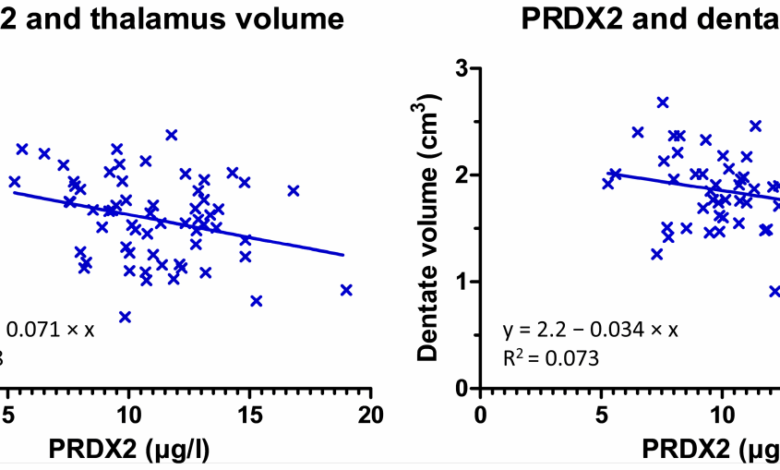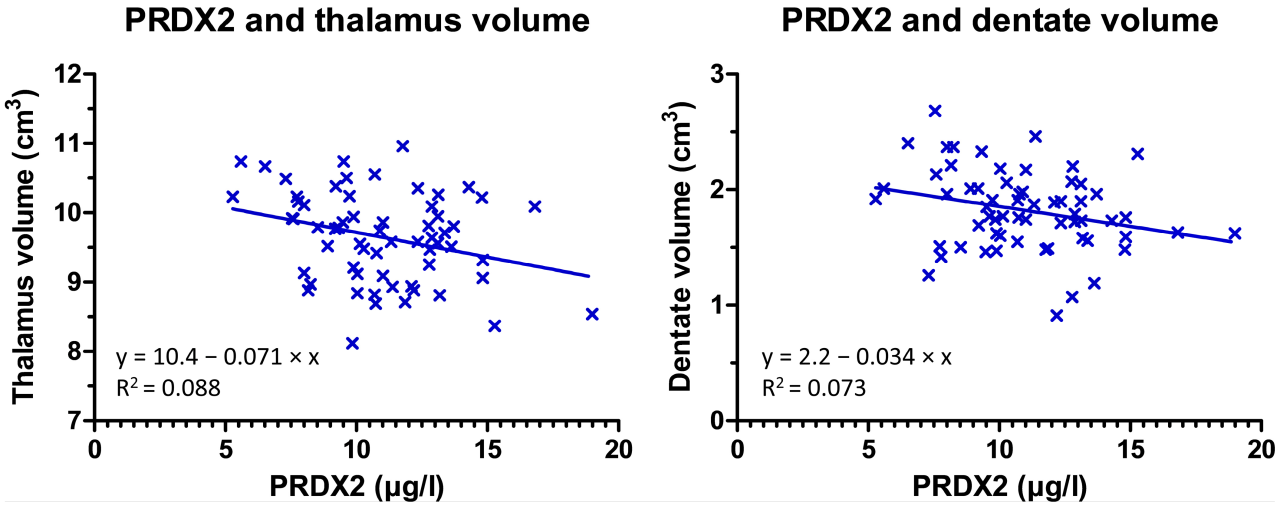
Oxidative stress affects multiple sclerosis, a debilitating autoimmune disease. This article delves into the complex relationship between these two factors, exploring how oxidative stress impacts the development, progression, and symptoms of MS. We’ll examine the mechanisms behind this interaction, analyze the evidence supporting this connection, and discuss potential therapeutic strategies to mitigate the damaging effects of oxidative stress on MS patients.
Oxidative stress, essentially an imbalance between free radicals and antioxidants, plays a crucial role in many diseases. In MS, this imbalance contributes to the damage of nerve cells, inflammation, and ultimately, the progression of the disease. We’ll examine the specific ways in which reactive oxygen species (ROS) affect the nervous system and immune cells in MS patients.
Introduction to Oxidative Stress
Oxidative stress is a state of imbalance in the body’s delicate equilibrium between the production of reactive oxygen species (ROS) and the body’s ability to neutralize them. This imbalance tips the scales, leading to damage to cellular components, including lipids, proteins, and DNA. Understanding oxidative stress is crucial for comprehending various health issues, including the development and progression of multiple sclerosis.The body constantly produces ROS as a byproduct of normal metabolic processes.
Oxidative stress plays a significant role in the development and progression of multiple sclerosis. Understanding how this impacts patients is crucial, and it’s important to consider how medical care in emergency rooms responds to potential exacerbations. Ultimately, better management of oxidative stress-related symptoms in multiple sclerosis requires further research and improved treatment options.
However, when the production of ROS exceeds the body’s antioxidant defenses, oxidative stress ensues. This excess can lead to a cascade of damaging events, potentially contributing to various diseases.
Defining Reactive Oxygen Species (ROS)
Reactive oxygen species are highly reactive molecules containing oxygen. They are generated through various metabolic processes, and are vital for normal cellular function. However, excessive ROS production overwhelms the body’s antioxidant defense mechanisms, resulting in oxidative stress.
Mechanisms of Oxidative Stress
Oxidative stress arises from a complex interplay of factors. Mitochondrial dysfunction, an important cellular energy powerhouse, can generate an excessive amount of ROS. Inflammation, a crucial part of the body’s immune response, also contributes to ROS production. Exposure to environmental toxins and pollutants, and dietary factors, can further exacerbate this imbalance. The accumulation of ROS can damage cellular structures, including DNA, proteins, and lipids.
This damage can trigger cellular dysfunction and even contribute to the development of chronic diseases.
Comparison of Reactive Oxygen Species (ROS)
| ROS Type | Description | Effects |
|---|---|---|
| Superoxide radical (O2−) | Highly reactive, short-lived molecule | Can damage lipids, proteins, and DNA; can contribute to inflammation |
| Hydrogen peroxide (H2O2) | Less reactive than superoxide radical, relatively stable | Can damage lipids, proteins, and DNA; can contribute to inflammation |
| Hydroxyl radical (•OH) | Extremely reactive, highly damaging | Damages DNA, proteins, and lipids with devastating consequences; major contributor to oxidative damage |
| Peroxynitrite (ONOO−) | A powerful oxidizing agent | Highly damaging to proteins, lipids, and DNA, particularly damaging to blood vessels |
Oxidative Stress and Inflammation
Inflammation is a natural response to cellular injury or infection. Oxidative stress and inflammation are intricately linked. ROS can activate inflammatory pathways, leading to the release of inflammatory mediators. Conversely, inflammatory processes can increase the production of ROS, creating a vicious cycle. This interplay between oxidative stress and inflammation plays a significant role in the pathogenesis of various diseases, including multiple sclerosis.
The chronic inflammation associated with multiple sclerosis is thought to be driven, in part, by an overproduction of ROS.
Oxidative Stress in Multiple Sclerosis (MS)
Oxidative stress, an imbalance between the production of reactive oxygen species (ROS) and the body’s antioxidant defenses, is increasingly recognized as a key player in the complex pathogenesis of multiple sclerosis (MS). This imbalance can lead to significant cellular damage, potentially contributing to the progressive demyelination and neuronal dysfunction characteristic of MS. Understanding the intricate relationship between oxidative stress and MS is crucial for developing novel therapeutic strategies aimed at mitigating disease progression.Oxidative stress is a prominent feature of MS, where the overproduction of ROS overwhelms the body’s antioxidant systems.
This excess of ROS can damage cellular components, including lipids, proteins, and DNA, ultimately contributing to the inflammatory and degenerative processes that define MS. The impact of this damage is not uniform across the entire nervous system, and there are distinct regional and cellular vulnerabilities.
Evidence Supporting the Role of Oxidative Stress in MS
A considerable body of research supports the involvement of oxidative stress in MS. Studies have consistently demonstrated elevated levels of ROS and reduced antioxidant capacity in MS patients compared to healthy controls. Furthermore, animal models of MS exhibit similar oxidative stress markers, providing further evidence linking oxidative stress to the disease process. These findings highlight the crucial role of oxidative stress in driving the cascade of events that lead to MS-related symptoms.
Oxidative stress plays a significant role in the development and progression of multiple sclerosis, weakening the body’s defenses. This year, pediatricians are highlighting the crucial need for flu vaccinations in children, emphasizing the importance of strengthening their immune systems. This heightened focus on preventative measures, as detailed in this article on why pediatricians say its more important this year for children to get a flu vaccine , highlights the interconnectedness of our health systems and the need for robust preventative measures, ultimately impacting the overall health and well-being of individuals, including those battling conditions like multiple sclerosis.
Potential Mechanisms of Oxidative Stress in MS Development
Oxidative stress may contribute to MS pathogenesis through various mechanisms. One key mechanism involves the direct damage to myelin sheaths, the protective layers surrounding nerve fibers. ROS can induce lipid peroxidation in myelin, disrupting its structure and function. Another mechanism relates to inflammation. Oxidative stress can activate inflammatory pathways, leading to the recruitment of immune cells and the release of pro-inflammatory cytokines.
These cytokines, in turn, can exacerbate oxidative stress, creating a vicious cycle.
Comparison of Oxidative Stress Levels in Different MS Subtypes
Oxidative stress levels may vary among different MS subtypes. While there is not a definitive, large-scale study that systematically analyzes this difference, some preliminary data suggest that the inflammatory and degenerative processes might lead to more pronounced oxidative stress in aggressive forms of MS. Further research is needed to definitively establish any correlation between oxidative stress levels and MS subtypes.
Cellular Targets of Oxidative Stress in MS
The following table Artikels the various cellular targets vulnerable to oxidative stress in MS.
| Cellular Target | Description of Damage |
|---|---|
| Myelin | Lipid peroxidation, structural damage, disruption of myelin sheath integrity |
| Neurons | DNA damage, mitochondrial dysfunction, impaired neuronal signaling |
| Oligodendrocytes | Oxidative damage to cellular components, leading to reduced myelin production and axonal demyelination |
| Immune cells | Activation of inflammatory pathways, enhanced production of pro-inflammatory cytokines |
Factors Exacerbating Oxidative Stress in MS
Several factors can exacerbate oxidative stress in MS patients. Environmental factors, such as exposure to certain toxins or pollutants, can contribute to an increase in ROS production. Dietary habits, characterized by low antioxidant intake and high intake of pro-oxidant substances, can also exacerbate oxidative stress. Genetic predisposition, with certain genes potentially influencing antioxidant capacity, plays a role in individual susceptibility.
Impact of Oxidative Stress on MS Symptoms

Oxidative stress, a fundamental imbalance between the production of harmful reactive oxygen species (ROS) and the body’s antioxidant defenses, plays a crucial role in the pathogenesis of multiple sclerosis (MS). This imbalance can trigger a cascade of events leading to various MS symptoms, including neurological dysfunction, axonal damage, and immune system dysregulation. Understanding the specific impacts of oxidative stress on different aspects of the disease is critical for developing targeted therapeutic strategies.Oxidative stress is not simply a contributing factor; it is intricately woven into the fabric of MS progression.
The damage caused by uncontrolled ROS production affects the delicate balance of the nervous system, impacting both its structure and function. This, in turn, manifests in a range of symptoms that characterize MS. The cumulative effect of oxidative stress over time can lead to significant neurological impairments, highlighting the importance of addressing this fundamental aspect of the disease.
Neurological Dysfunction and Oxidative Stress, Oxidative stress affects multiple sclerosis
Oxidative stress directly contributes to the neurological dysfunction observed in MS patients. ROS damage to myelin, the protective sheath surrounding nerve fibers, disrupts nerve impulse transmission. This disruption manifests as a variety of symptoms, including weakness, numbness, tingling, and visual disturbances. The extent of these symptoms correlates with the degree of oxidative stress in the affected areas. In essence, the greater the oxidative damage, the more pronounced the neurological symptoms.
Axonal Damage and Oxidative Stress in MS
Axonal damage is a significant feature of MS progression. Oxidative stress is implicated in this damage. ROS can directly attack axons, leading to their degeneration and impaired function. This loss of axons directly correlates with the severity of MS symptoms. The loss of axonal integrity further exacerbates the neurological deficits, contributing to the progressive nature of the disease.
Impact of Oxidative Stress on Immune Cell Function
Oxidative stress significantly influences the function of immune cells in MS. ROS can alter the activity of T cells and other immune cells, potentially leading to an inappropriate or excessive immune response against the myelin sheath. This can lead to chronic inflammation, a hallmark of MS. Furthermore, the impaired immune response may reduce the body’s ability to effectively combat the disease.
Oxidative stress plays a significant role in the development and progression of multiple sclerosis. It’s a complex issue, and while some research looks into the impact of various environmental factors, it’s important to separate the science from the myths. For example, the effectiveness of chlorine in killing viruses like COVID-19 is a hot topic does chlorine kill covid , but that doesn’t directly correlate to how oxidative stress impacts MS.
Ultimately, understanding oxidative stress and its impact on the immune system remains crucial to finding effective treatments for multiple sclerosis.
Oxidative Stress and Cognitive Impairment in MS
Cognitive impairment is a prevalent symptom in MS patients. Oxidative stress in the brain may contribute to cognitive dysfunction. ROS can damage brain cells and impair their ability to communicate effectively. This can lead to memory problems, difficulties with concentration, and other cognitive deficits. For example, studies have shown a correlation between oxidative stress markers and cognitive performance in MS patients.
Comparison of Oxidative Stress Effects on Brain Regions
| Brain Region | Specific Impact of Oxidative Stress | Example Manifestation in MS |
|---|---|---|
| Cerebral Cortex | Damage to neurons, disruption of neural pathways, affecting higher-level cognitive functions. | Difficulties with memory, attention, and executive functions. |
| Cerebellum | Impairment of motor coordination and balance due to oxidative stress-induced damage to cerebellar neurons. | Unsteady gait, tremors, and difficulties with coordination. |
| Hippocampus | Impaired memory formation and retrieval due to oxidative stress-induced damage to hippocampal neurons. | Problems with learning and remembering new information. |
Oxidative Stress and MS Progression
Oxidative stress, a chronic imbalance between the production of harmful reactive oxygen species (ROS) and the body’s antioxidant defenses, plays a crucial role in the multifaceted nature of multiple sclerosis (MS). This imbalance contributes to various aspects of MS progression, including the development of relapses and the long-term deterioration of the nervous system. Understanding the mechanisms through which oxidative stress fuels MS progression is essential for developing effective therapeutic strategies.Oxidative stress contributes to MS disease progression by damaging myelin sheaths, the protective coverings around nerve fibers.
This damage disrupts nerve signals, leading to the characteristic symptoms of MS. Furthermore, oxidative stress can trigger inflammation in the central nervous system, creating a vicious cycle where inflammation exacerbates oxidative stress, and the combined effect leads to progressive nerve damage. This persistent oxidative stress is strongly linked to the gradual loss of neuronal function, a key contributor to the worsening of MS symptoms over time.
The ongoing production of ROS and the body’s inability to effectively neutralize them ultimately accelerate the degenerative process.
Oxidative Stress and MS Relapses
Oxidative stress is implicated in the development of MS relapses, periods of heightened disease activity characterized by the worsening of symptoms. Increased ROS production during relapses can damage neuronal structures and disrupt nerve signaling, directly contributing to the symptomatic exacerbation. This oxidative stress surge likely occurs in response to various triggers, such as infections or environmental stressors. The resulting inflammation further disrupts the delicate balance of the central nervous system, making individuals more susceptible to relapses.
Oxidative Stress Markers in MS Patients
The following table provides a summary of various oxidative stress markers that have been observed in MS patients at different disease stages. Variations in these markers can reflect the dynamic nature of oxidative stress in MS and its correlation with disease activity.
| Oxidative Stress Marker | Early Stage MS | Intermediate Stage MS | Late Stage MS |
|---|---|---|---|
| Lipid Peroxidation Products (e.g., MDA) | Elevated compared to healthy controls | Significantly higher than early stage | Highest levels, potentially correlating with more severe disease |
| Antioxidant Capacity (e.g., Vitamin E, Catalase) | Potentially decreased compared to healthy controls | Further decline compared to early stage | Lowest levels, indicating compromised antioxidant defenses |
| Reactive Oxygen Species (e.g., Hydrogen Peroxide) | Elevated compared to healthy controls | Further increase compared to early stage | Highest levels, indicating ongoing oxidative stress |
| DNA damage | Mild increases | More pronounced increases | Significant increases, suggesting extensive cell damage |
Correlation Between Oxidative Stress and Disease Activity
A strong correlation exists between oxidative stress levels and disease activity in MS. Higher levels of oxidative stress markers are typically observed during periods of active disease, suggesting a direct link between the degree of oxidative stress and the severity of MS symptoms. For example, a patient experiencing a relapse might show a spike in oxidative stress markers, while a period of remission might be associated with lower levels.
Influence of Oxidative Stress on MS Disease Severity
Oxidative stress’s influence on MS disease severity is multifaceted. Higher oxidative stress levels are frequently associated with more severe forms of MS. This is likely because chronic oxidative damage to nerve cells and myelin sheaths leads to progressive neuronal loss and functional impairment, eventually resulting in a more debilitating disease course. For instance, patients with a higher level of oxidative stress markers tend to have a greater reduction in their quality of life.
Therapeutic Strategies Targeting Oxidative Stress in MS

Oxidative stress, a crucial player in the progression of multiple sclerosis (MS), is a significant challenge in managing this debilitating disease. Understanding the mechanisms through which oxidative stress contributes to MS pathology is vital for developing effective therapeutic strategies. Targeting oxidative stress holds promise for slowing disease progression and improving patient outcomes.Effective management of oxidative stress in MS involves a multi-faceted approach, moving beyond simple antioxidant supplementation to encompass lifestyle modifications, and the development of targeted therapies.
This approach is crucial as oxidative stress isn’t a singular problem, but a complex interplay of cellular mechanisms.
Existing Strategies for Managing Oxidative Stress in MS
Various strategies are currently employed to mitigate oxidative stress in MS patients. These include lifestyle interventions such as a balanced diet rich in antioxidants, regular exercise, and stress management techniques. Pharmacological interventions, such as antioxidant therapies, are also commonly considered. Early detection and management of oxidative stress are paramount to slowing disease progression and improving quality of life for individuals with MS.
Potential of Antioxidants in Mitigating Oxidative Stress in MS
Antioxidants play a critical role in neutralizing free radicals and preventing oxidative damage. They can potentially protect neuronal cells from the damaging effects of oxidative stress, thereby slowing the progression of MS. The selection of antioxidants, however, should be carefully considered as not all antioxidants are equally effective or safe. Individualized approaches, considering factors like patient health, and specific disease manifestations, are crucial for maximizing the benefits and minimizing potential side effects.
Promising Therapeutic Targets for Reducing Oxidative Stress in MS
Beyond general antioxidant supplementation, researchers are exploring novel therapeutic targets that directly address the mechanisms underlying oxidative stress in MS. These targets include those involved in the regulation of antioxidant enzymes, the control of inflammatory processes, and the maintenance of cellular integrity. Further research in this area holds the potential to develop more effective and targeted therapies. Specific therapeutic approaches may target the modulation of inflammatory pathways or the stimulation of neuroprotective pathways.
Comparison of Antioxidant Therapies for MS
| Antioxidant Therapy | Mechanism of Action | Potential Benefits | Potential Side Effects | Evidence Base |
|---|---|---|---|---|
| Vitamin E | Neutralizes free radicals, improves membrane integrity | Potential neuroprotection, reduced oxidative damage | Potential for interactions with other medications, gastrointestinal issues | Mixed results in clinical trials |
| Vitamin C | Potent antioxidant, reduces inflammation | May improve antioxidant defenses, support immune function | Potential for gastrointestinal upset, interactions with other medications | Some evidence of efficacy in reducing oxidative stress markers |
| N-acetylcysteine (NAC) | Precursor to glutathione, a crucial antioxidant | Potentially increases glutathione levels, supports cellular defenses | Generally well-tolerated, but potential for mild gastrointestinal discomfort | Ongoing research exploring efficacy in MS |
Measuring Oxidative Stress in MS Patients
Assessing oxidative stress in MS patients involves measuring various markers. These markers provide insights into the extent of oxidative damage and inflammation. Common methods include measuring levels of lipid peroxidation products, such as malondialdehyde (MDA), and the activity of antioxidant enzymes like superoxide dismutase (SOD) and catalase. Blood samples and cerebrospinal fluid (CSF) analyses can provide information about the levels of these biomarkers, helping to tailor treatment approaches for individual patients.
Furthermore, oxidative stress markers may vary depending on the specific location of the demyelination in the nervous system. Therefore, detailed monitoring and assessment are vital for patient management.
Future Directions and Research Gaps: Oxidative Stress Affects Multiple Sclerosis
Unraveling the intricate relationship between oxidative stress and multiple sclerosis (MS) remains a significant challenge. While substantial progress has been made in understanding the mechanisms and consequences of oxidative stress in MS, crucial knowledge gaps persist, hindering the development of more effective therapies. Addressing these gaps is paramount to improving the lives of those affected by this debilitating disease.Current research demonstrates a strong correlation between oxidative stress and MS progression.
However, pinpointing the precise triggers and mechanisms linking oxidative stress to MS pathogenesis requires further investigation. Understanding the complex interplay between various oxidative stress markers, genetic predisposition, environmental factors, and MS subtypes is essential to tailor treatments more effectively.
Defining the Role of Specific Oxidative Stress Markers
The identification and characterization of specific oxidative stress markers that directly correlate with MS disease activity and progression are crucial. Current research has identified several potential markers, but more robust studies are needed to validate their clinical significance. These studies should involve larger cohorts and diverse patient populations to account for variations in disease presentation and severity. Furthermore, longitudinal studies are essential to track the progression of oxidative stress markers over time and their potential role in predicting disease flares.
Exploring the Impact of Environmental Factors
Environmental factors likely play a significant role in exacerbating oxidative stress and influencing MS development. Further research is needed to investigate the precise interactions between environmental exposures, such as diet, lifestyle, and geographic location, and the oxidative stress response in MS. Identifying specific environmental triggers and their impact on individual susceptibility will allow for the development of preventative strategies and personalized treatment approaches.
This could involve large-scale epidemiological studies and detailed analysis of environmental factors within specific geographical regions.
Investigating the Potential of Novel Therapeutic Targets
Current therapeutic strategies for MS primarily focus on reducing inflammation. However, strategies targeting oxidative stress pathways could offer a novel avenue for treatment and potentially improve outcomes. Exploring novel therapeutic targets within the oxidative stress response could lead to the development of agents that specifically address the underlying cause of oxidative stress damage. This could involve investigating antioxidants, enzymes, or other compounds that modulate oxidative stress signaling pathways.
Developing a Comprehensive Research Strategy
A coordinated research strategy is essential to address the multifaceted nature of oxidative stress in MS. This strategy should involve collaborations between researchers, clinicians, and patient advocacy groups. It should also incorporate standardized methodologies for data collection and analysis to ensure the reproducibility and validity of research findings. Such a collaborative approach is necessary to integrate findings from diverse research avenues and translate them into effective treatments.
- Establish standardized protocols for measuring oxidative stress markers in MS patients to ensure consistency and comparability across different studies.
- Conduct large-scale epidemiological studies to identify environmental factors associated with increased oxidative stress and MS risk.
- Develop preclinical models that accurately reflect the complexity of oxidative stress and MS pathogenesis.
- Prioritize the development of novel therapeutic agents that specifically target oxidative stress pathways.
- Foster international collaborations to share data, resources, and expertise in addressing the challenges of oxidative stress in MS.
Concluding Remarks
In conclusion, the evidence strongly suggests that oxidative stress significantly impacts multiple sclerosis. From its role in initial pathogenesis to its contribution to disease progression and symptom exacerbation, oxidative stress emerges as a key player in MS. Understanding this connection is crucial for developing effective therapeutic strategies that aim to reduce oxidative stress and potentially slow or halt the progression of MS.
Future research should focus on developing targeted interventions that address this critical aspect of the disease.


